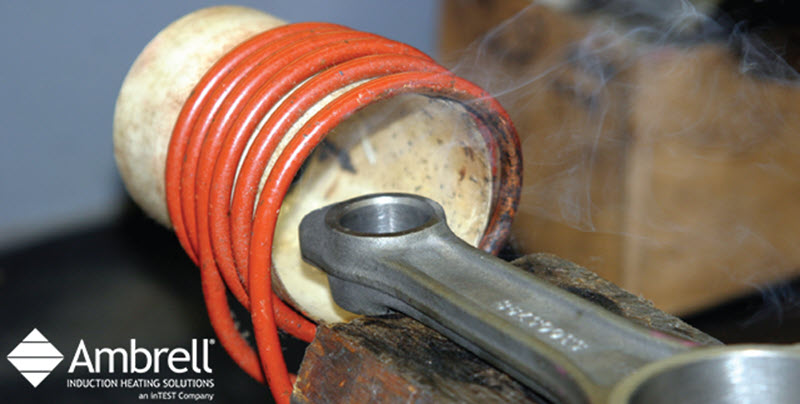Induction Brazing an Aluminum Assembly
Objective A company wanted to assess using induction heating for their aluminum assembly brazing process, and contacted THE LAB at Ambrell to utilize...
Applications
Applications: More
Applications: More

Industries:
Industries: More
Industries: More
Industries: More

Products:
Products: More
Services:
Services: More

Learn:
Learn: More
About:


A client contacted THE LAB at Ambrell looking to assemble connecting rods. Their company was looking for better control of the heat delivered to the assembly than their flame delivered. THE LAB determined that an Ambrell EASYHEATTM 3.5 kW, 150-400 kHz induction heating system with a six-turn helical coil would be ideal for this induction shrink fitting application.
That six-turn helical coil was used to heat the connecting rod for 13 seconds. The coil was perpendicular to the axis of the bore to promote even heating around the circumference. The connecting rod was then assembled with the piston for shrink fitting. The application was successful and met the client's time and quality objectives.
For this application, induction heating offered several advantages. It offered more accurate control of heat, as induction only heated the knuckle as opposed to the whole part. With induction, they were able to use a lower temperature than with the flame which prevented discoloring. Additionally, with induction's precise heating there was no product contamination. Finally, induction increased productivity due to its repeatability and easy of operation.
THE LAB at Ambrell has a significant amount of experience with induction shrink fitting applications. To learn more about free application testing, visit our page with more information about THE LAB or contact us today to get the process started.

Objective A company wanted to assess using induction heating for their aluminum assembly brazing process, and contacted THE LAB at Ambrell to utilize...

Induction heating is a process that uses electromagnetic fields to heat electrically conductive materials. It has been used in numerous industries...

Induction heating, a process that uses electromagnetic induction to heat electrically conductive materials, is often thought of for large industrial...